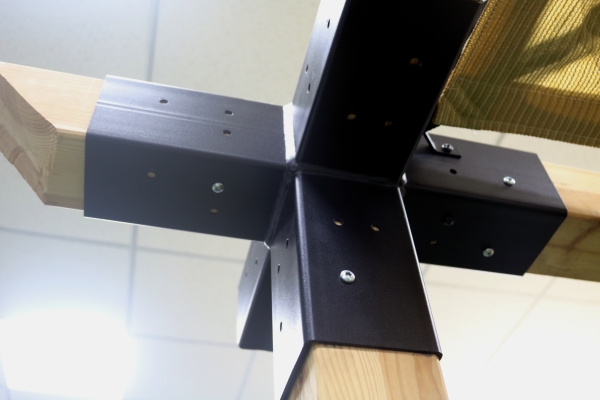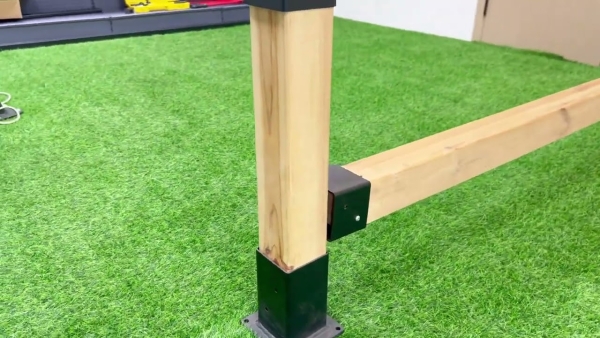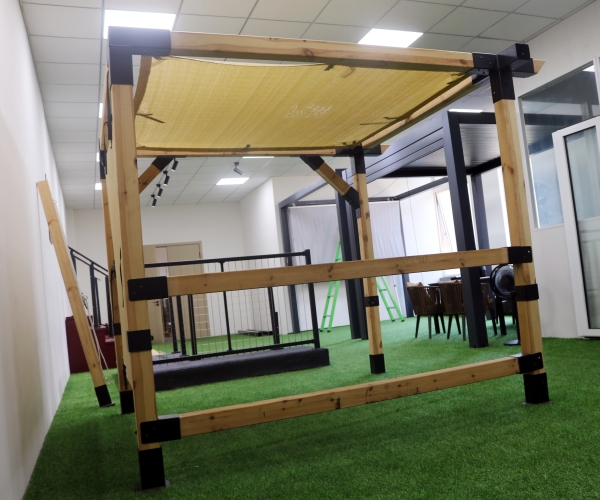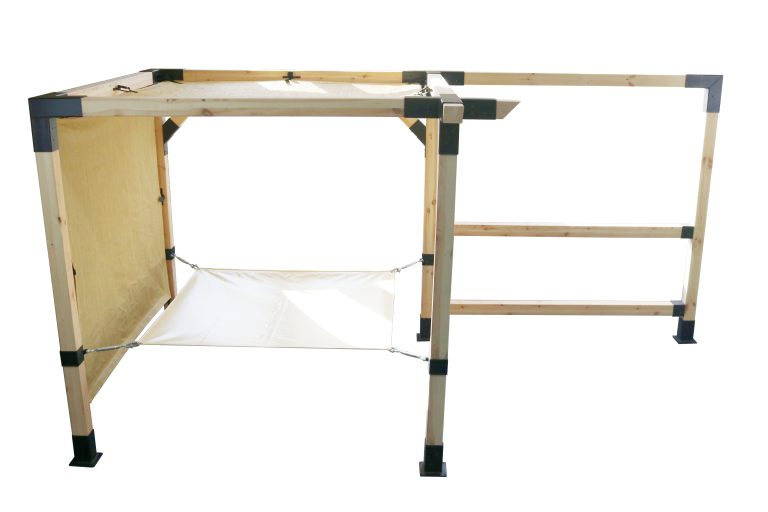Table of Contents
Types de bois à considérer pour votre pergola
Facteurs à prendre en compte lors du choix du meilleur bois pour votre pergola
L’un des facteurs les plus importants à prendre en compte lors du choix du meilleur bois pour votre pergola est le type de climat dans lequel vous vivez. Différents types de bois ont différents niveaux de résistance à l’humidité, à la lumière du soleil et aux variations de température. Il est donc important de sélectionner un matériau bien adapté aux conditions spécifiques de votre région. Par exemple, si vous vivez dans un climat humide, vous souhaiterez peut-être choisir un bois naturellement résistant à la pourriture et à la pourriture, comme le cèdre ou le séquoia. En revanche, si vous vivez dans un climat sec, vous souhaiterez peut-être choisir un bois plus résistant à la fissuration et au fendillement, comme le teck ou l’ipé.
Un autre facteur important à prendre en compte lors du choix du meilleur bois pour votre pergola. est le niveau d’entretien requis. Certains types de bois, comme le cèdre et le séquoia, sont naturellement résistants à la pourriture et nécessitent un entretien minimal, tandis que d’autres, comme le pin et le sapin, peuvent nécessiter un scellement et une teinture réguliers pour éviter la pourriture et la pourriture. Il est important de prendre en compte le temps et les efforts que vous êtes prêt à investir dans l’entretien de votre pergola lors de la sélection d’un matériau en bois.
En plus des exigences climatiques et d’entretien, il est également important de prendre en compte l’esthétique globale de votre pergola lors du choix du matériau. meilleur matériau en bois. Différents types de bois ont des motifs de grain et des couleurs uniques qui peuvent ajouter du caractère et du charme à votre espace extérieur. Par exemple, le cèdre et le séquoia ont une teinte rougeâtre chaude qui peut compléter une variété de styles architecturaux, tandis que le teck et l’ipé ont une couleur riche et sombre qui peut créer un look plus moderne et sophistiqué.
Lors de la sélection du meilleur bois pour votre pergola, il est important de considérer tous ces facteurs afin de choisir un matériau qui soit non seulement beau mais aussi durable et durable. En prenant le temps de rechercher différents types de bois et leurs propriétés, vous pouvez vous assurer que votre pergola résistera à l’épreuve du temps et vous offrira des années de plaisir et de détente dans votre espace extérieur.
Factors to Consider When Choosing the Best Wood for Your Pergola
When it comes to selecting the best wood for your pergola, there are several factors to consider in order to ensure that you choose a material that is not only aesthetically pleasing but also durable and long-lasting. The type of wood you choose will have a significant impact on the overall look and feel of your pergola, as well as its ability to withstand the elements and resist decay over time.
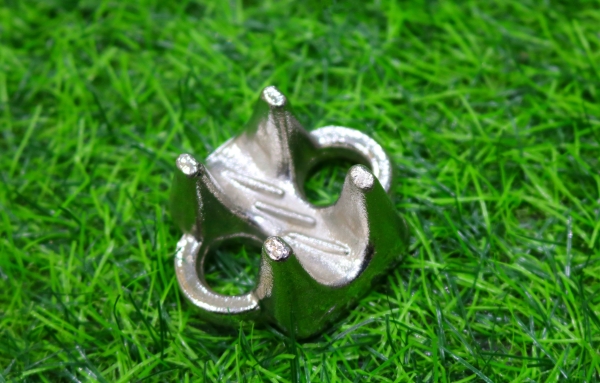
One of the most important factors to consider when choosing the best wood for your pergola is the type of climate in which you live. Different types of wood have varying levels of resistance to moisture, sunlight, and temperature fluctuations, so it is important to select a material that is well-suited to the specific conditions in your area. For example, if you live in a humid climate, you may want to choose a wood that is naturally resistant to rot and decay, such as cedar or redwood. On the other hand, if you live in a dry climate, you may want to choose a wood that is more resistant to cracking and splitting, such as teak or ipe.
Another important factor to consider when choosing the best wood for your pergola is the level of maintenance required. Some types of wood, such as cedar and redwood, are naturally resistant to decay and require minimal maintenance, while others, such as pine and fir, may require regular sealing and staining to prevent rot and decay. It is important to consider how much time and effort you are willing to invest in maintaining your pergola when selecting a wood material.
In addition to climate and maintenance requirements, it is also important to consider the overall aesthetic of your pergola when choosing the best wood material. Different types of wood have unique grain patterns and colors that can add character and charm to your outdoor space. For example, cedar and redwood have a warm, reddish hue that can complement a variety of architectural styles, while teak and ipe have a rich, dark color that can create a more modern and sophisticated look.
When selecting the best wood for your pergola, it is important to consider all of these factors in order to choose a material that is not only beautiful but also durable and long-lasting. By taking the time to research different types of wood and their properties, you can ensure that your pergola will stand the test of time and provide you with years of enjoyment and relaxation in your outdoor space.

